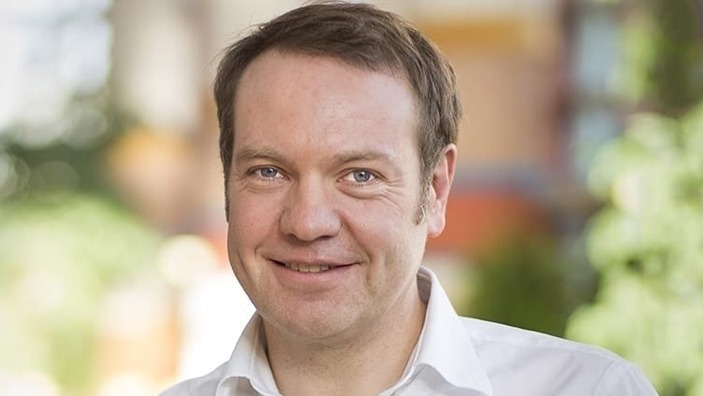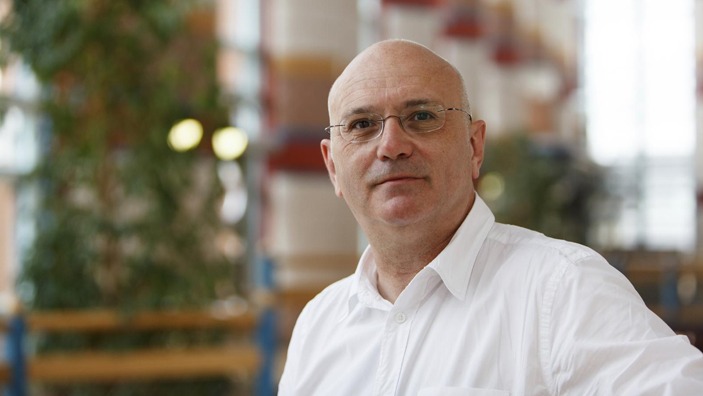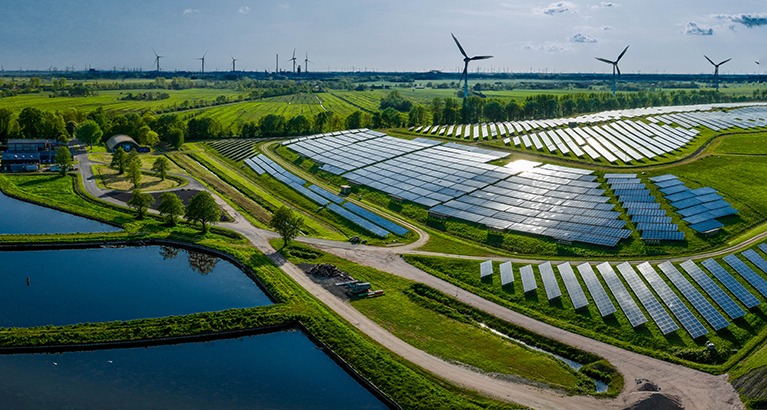Social innovation can play a key role in helping to meet the UN Sustainable Development Goals (SDGs). Unveiled by the UN in 2015, the SDGs include 17 goals and 169 specific targets, and aim to address by 2030 fundamental global challenges in areas such as environment, health, education and inequality.
So what are some of the obstacles to meeting these aims through the social innovation ecosystem? And how did they arise?
Research by the Co-Directors of the Cambridge Centre for Social Innovation, Paul Tracey, Professor of Innovation and Organisation, and Neil Stott, Management Practice Professor of Social Innovation, identifies 5 blockages that impede SDG progress:
- financial resources
- greenwashing by private firms
- the marginalisation of the state
- top-down intervention
- a misguided focus on how to scale social enterprise


Sustainable Development Goals: slow progress, assumptions, and challenges
The Sustainable Development Goals (SDGs) have helped formulate a common vocabulary for talking about these problems and to draw interconnections between a complex set of issues. But progress to date in meeting the 2030 goals has been painfully slow in part due to these blockages, say Paul and Neil, whose research critically examines some assumptions that have got in the way of social innovation paths to solving some of these grand challenges.
“These assumptions constitute a particular logic of social change which emphasises the need to embrace market-based activity, with the responsibility falling disproportionally on the third sector that is expected to address the most deep-rooted social problems through forms of enterprise,” says their research.
“The SDGs are the most recent global attempt to stimulate innovation in the face of global challenges and existential risks. Yet our collective ability to achieve the goals is questionable: while governments, companies, and social sector organisations participate in a grand social-symbolic narrative that indicates progress is being made, the evidence at the coalface of these initiatives paints a different picture.”
What are the 5 blockages hindering UN Sustainable Development Goal progress?
1
Financial resources
The UN estimates that more than $5 trillion per year will be needed to achieve the Sustainable Development Goals (SDG) targets by 2030, which cannot all come from governments. While the impact investment market is growing rapidly (and was estimated at $1.15 trillion in 2022), such investors have been remarkably passive.
“The rapidly growing impact investor movement does not seem to want to engage with the SDGs nor beneficiary communities around the world,” say Paul and Neil. “A recent study found that while 93% of impact investors said they aligned their objectives with the SDGs, only 48% aimed to achieve any of the 169 specific targets, and only 11% actually engaged with communities, customers, workers, and other stakeholders to understand the impact they were having or not having.”
Such investors often rely on high-level targets to gauge the impact of their investments, but these can vary dramatically in quality and can actually make things worse.
Statistical data can be misleading
An example drawn from previous work by Paul and Neil involved initiatives designed to get unemployed people back in the labour market, but the criteria for this project’s success focused only on the proportion of clients who moved into and stayed in employment for a particular period of time. This had the effect of filtering out very needy people who might have been out of work for a long time, have disabilities or have criminal records, because the private firms involved focused on people they were confident they could place.
“The rest were left for other organisations to pick up – social enterprises and non-profits. On paper, then, it looked like these private organisations were doing an amazing job of helping people get back into work, and the social enterprises and non-profits looked like they were doing a relatively poor job because they were placing fewer clients. But the reality on the ground told a very different story: the social enterprises and non-profits were helping very different types of people that had more complex needs. But the funder would only have been able to find that out through direct engagement.”
2
Greenwashing by private firms
Despite some high-profile engagement in Sustainable Development Goals by people like Paul Polman, former CEO of consumer goods giant Unilever, much corporate engagement with the SDGs has “so far been largely superficial – often used to support their reputations through greenwashing and social washing rather than meaningful attempts to make positive social change”, says the research by Paul and Neil.
They cite previous research by other scholars published in 2020 in the Journal of Cleaner Production that examined the world’s 2,000 largest listed companies and how they engaged with the SDGs. While there has been a lot of talk about the SDGs from these firms, there are few specific commitments to meet them and the SDGs are not part of the companies’ core strategies. The SDGs, said that research, are looked at “as a scheme with non-committal implications”.
“There were some exceptions among companies in Asia including South Korea, Japan and Thailand”, says Paul, “and this may because those governments have played more active roles in both promoting the SDGs and putting in place regulation to enforce them. But the clear implication is that voluntary codes are unlikely to work. This also suggests that large establishment companies may be incapable of transforming themselves to align with the SDGs, and that we instead need to look at an emerging new generation of emerging entrepreneurs.”
3
The marginalisation of the state
Most social innovation debate in both theory and practice has focused on the social and private sectors, so the role of government intervention has been marginalised – with the state often being seen as part of the problem rather than part of the solution.
Regarding climate, for example, early strategies emphasised the role of governments in creating regulatory systems to reduce reliance on the carbon economy, but more recently the focus has shifted toward innovation in the private sector.
“More broadly, the growth of social innovation in the Global North, and the US and UK in particular, is often assumed to be the result of the shrinking nation state – a shift from a set of assumptions about universal provision and forms of welfare to distributed, and uneven, provision and forms of welfare with a view to ‘efficiency; and cutting through red tape”, says the research by Paul and Neil.
“And in the Global South the state is often assumed to be incompetent and/or corrupt, with investment often diverted to private firms. This is exemplified by the Gates Foundation’s massive investment in African health systems, which has sought to promote private provision, and arguably placed these health systems on a trajectory that will eventually mimic a version of the US healthcare model.”
There is clear room for debate on past performance and future potential of the state in driving social innovation. “Yet, in our experience, current generations of social innovators rarely use the political tools available to them to make change or engage within political infrastructures to make or reform law, regulations, or policy”, say the authors.
4
Pressure for social sector to scale
The social innovation community has too often sought to replicate in subsequent initiatives organisations and practices rather than replicating the results of successful projects – and “our experience of third sector organisations suggests that this is not working”.
“The reason is that the same social problem often manifests itself very differently across time and place,” says the research, citing as an example unique local issues that require homelessness to be tackled very differently in various UK cities.
“This is an important lesson for the impact investment community, which is arguably too deferential to ideas about scaling from the business and startup world. Building huge social organisations delivering across many different places at scale is not necessarily the best – or most democratic and accountable – way to make social change”, the research says.
Issues tackled by social enterprises are often bound up in local politics
Says Neil, formerly the head of a social enterprise in an East of England area that faced many challenges including poverty, stretched public resources, and tension between long-term residents and those who had recently arrived: “Many of the issues addressed by the SDGs, such as inequality and healthcare, involve complex cultural and social problems that are often bound up with local politics and other regional or local issues.”
“There has often been pressure for social enterprises and other impact organisations to simply get bigger, with the assumption that bigger is better, but that can be strategically unwise because it can threaten an organisation’s financial stability and actually dilute the group’s impact in addressing local issues.”
Previous research by Paul looked at the dynamics of homelessness – while “one might expect that the dynamics of homelessness, and the organisational solutions that are needed to tackle homelessness, would be broadly the same across UK cities, like Bristol and Liverpool for example. But the reality on the ground suggested a different picture – we found that there were important local issues which meant that the specific dynamics of homelessness were unique in each place, and that somewhat different models to address homelessness were therefore needed for different cities.”
The authors conclude that these examples hold lessons for the impact investment community, which misguidedly can seek to export to social enterprises ideas about scaling-up from the business and startup communities.
5
Top-down interventions
While some issues such as climate may call for centralised regulation and control, many other cases (especially in low-income countries) call for a different approach that is more locally accountable.
“The justification for top-down initiatives is often to support vulnerable groups with a view to making them more productive and resilient, and this type of discourse ‘lends itself too easily to hijackings by powerful actors driving their own interests’”, say Paul and Neil, quoting from a previous study by other researchers published in 2021 in the journal Industry and Innovation.
“These interventions are done to’ communities, rather than done with or by them, and often fail to take root or have unintended negative consequences in the longer-term because they are inconsistent with local cultural traditions and ways of organising,” says the research by Paul and Neil.
Citing their own experience, chronicled in their previous study, “Organizing and innovating in poor places” from 2017, on innovating in poor communities, the authors say they learned “first-hand that community participation is not always straightforward: it is time consuming, it is resource intensive, and it is not clear whether true participation is even possible in some cases”.
“But the social innovation movement needs to get better at enabling communities to frame the problems that they face, and to develop their own solutions to those problems” and this requires an expanded repertoire of skills and practices that the authors plan to explore in future research.
The examination of how blockages and assumptions have hindered the use of social innovation to tackle the SDGs is part of a series of articles by the Centre for Social Innovation entitled ‘Critical Perspectives on Social Innovation’, which provides insightful critiques of social innovation theory and practice while exploring alternative approaches. The series is by invitation by contributors from inside and outside the Business School.
As social innovation ideas and practice are being more widely adopted around the world, “there is the danger of a onesize-fits-all approach to social innovation, rather than exploring practises drawn from other times, places and cultural contexts”, the CCSI says.
Thoughts from the authors
The UN’s Sustainability Development Goals present a very illustrative example of how different approaches are required to tackle the same issue in different places around the world, so the SDGs were a good place for the Cambridge Centre for Social Innovation to focus critically on these issues.
Just as certain assumptions are slowing progress toward achieving the SDGs, social innovation itself can be affected.by assumptions that need testing – and that’s what the series focuses on.
About the series
The Critical Perspectives on Social Innovation series provides with insightful critiques of social innovation theory and practice.
Read 'Social innovation and the UN Sustainable Development Goals: 5 blockages to progress'
Featured faculty
Neil Stott
Management Practice Professor of Social Innovation
Paul Tracey
Professor of Innovation and Organisation
Related research
Stott, N. and Tracey, P. (2018) “Organizing and innovating in poor places.” Innovation: Organization and Management, 20(1): 1-17





